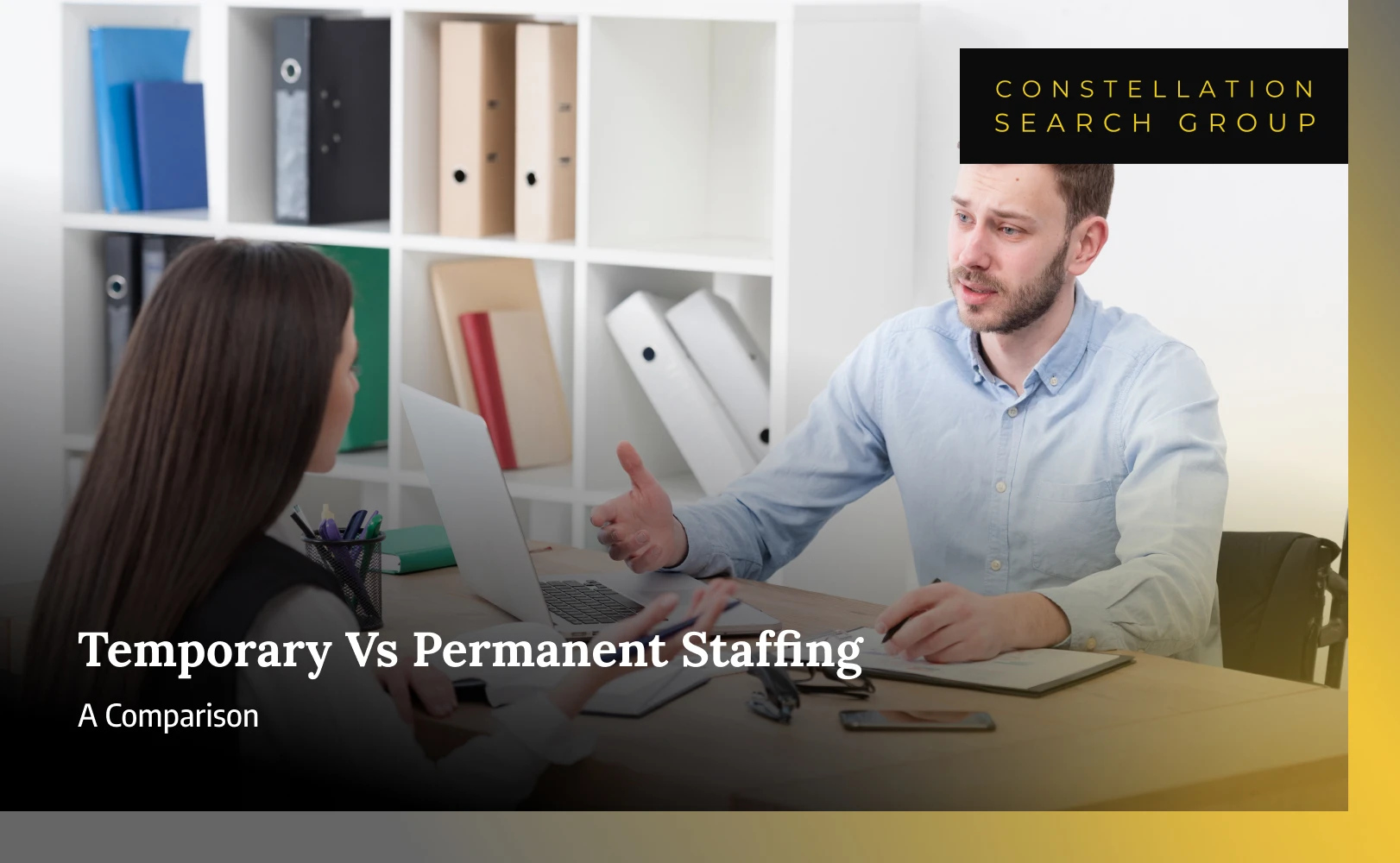Imagine this: Your top-performing employee just handed in their resignation. You’re left scrambling to fill the role, train a new hire, and manage the disruption to your team. Sound familiar? Employee turnover isn’t just a hassle—it’s expensive. Studies show that replacing an employee can cost 6-9 months of their salary, not to mention the hidden costs of lost productivity and morale.
But what if you could turn the tide? Retaining employees isn’t just about saving money—it’s about building a thriving workplace culture, boosting productivity, and securing long-term business success. In this guide, we’ll explore why retaining employees is important and provide actionable strategies to help you keep your top talent.
Why is Retaining Employees Important?
The High Cost of Employee Turnover
Employee turnover is a silent profit killer. According to the Society for Human Resource Management (SHRM), replacing an employee can cost up to 200% of their annual salary for high-level roles. But the financial impact is just the tip of the iceberg. Turnover also leads to:
-
- Lost productivity: New hires take time to reach full efficiency.
-
- Decreased morale: Frequent departures can create uncertainty among remaining staff.
-
- Knowledge loss: Experienced employees take valuable insights with them.
Benefits of Employee Retention
Retaining employees isn’t just about avoiding costs—it’s about unlocking benefits that drive business growth:
-
- Higher productivity: Long-term employees are more efficient and knowledgeable.
-
- Stronger workplace culture: Retention fosters trust, collaboration, and loyalty.
-
- Enhanced employer brand: Companies with low turnover attract top talent.
-
- Improved customer satisfaction: Experienced employees deliver better service.
The Link Between Retention and Business Success
Companies that prioritize retention often outperform their competitors. For example, Google is renowned for its employee-centric culture, offering perks like free meals, on-site wellness programs, and career development opportunities. As a result, Google boasts a retention rate of over 90%, contributing to its status as one of the world’s most successful companies.
How to Retain Employees: Proven Strategies
Retaining employees is crucial for organizational success, as high turnover can lead to increased costs, loss of productivity, and a decline in morale. Here’s an elaboration on how the strategies mentioned can help an organization retain employees and achieve long-term benefits:
1. Build a Positive Workplace Culture
A positive workplace culture fosters loyalty, engagement, and a sense of belonging among employees. When employees feel valued and respected, they are more likely to stay with the organization.
-
- Foster inclusivity: An inclusive environment ensures that employees from diverse backgrounds feel welcome and respected. This reduces feelings of isolation and increases job satisfaction, leading to higher retention rates.
-
- Encourage collaboration: Teamwork and collaboration create a sense of unity and shared purpose. Employees who feel connected to their colleagues are more engaged and less likely to leave.
-
- Lead by example: When managers demonstrate respect, integrity, and professionalism, it sets the tone for the entire team. Employees are more likely to emulate these behaviors, creating a harmonious and productive work environment.
Organizational Impact: A strong culture improves employee morale, reduces turnover, and enhances the company’s reputation, making it easier to attract top talent.
2. Offer Competitive Compensation and Benefits
Fair and competitive compensation is a key factor in retaining employees. Beyond salary, benefits that address employees’ holistic needs can significantly improve retention.
-
- Health insurance and retirement plans: These benefits show employees that the organization cares about their long-term well-being and financial security.
-
- Flexible work arrangements: Offering remote work or hybrid models helps employees balance their personal and professional lives, reducing stress and burnout.
-
- Wellness programs: Mental health support, gym memberships, or meditation classes demonstrate a commitment to employees’ overall health, leading to higher job satisfaction and productivity.
Organizational Impact: Competitive compensation and benefits reduce turnover, increase employee loyalty, and position the organization as an employer of choice in the market.
3. Invest in Employee Development
Employees are more likely to stay with an organization that invests in their growth and development. Providing opportunities for learning and advancement shows employees that the company values their potential.
-
- Training programs and upskilling: Regular training keeps employees’ skills relevant and prepares them for future challenges, making them feel more confident and engaged.
-
- Mentorship programs: Pairing employees with mentors helps them navigate their career paths, build relationships, and gain valuable insights.
-
- Career progression paths: Clear pathways for advancement give employees a sense of direction and motivation to stay with the organization long-term.
Organizational Impact: Investing in employee development leads to a more skilled and motivated workforce, reduces turnover, and ensures the organization has a pipeline of future leaders.
4. Recognize and Reward Employees
Recognition is a powerful tool for boosting morale and reinforcing positive behaviors. When employees feel appreciated, they are more likely to remain committed to the organization.
-
- Public acknowledgment: Highlighting achievements in team meetings or newsletters boosts employees’ confidence and encourages others to strive for excellence.
-
- Tangible rewards: Bonuses, promotions, or gift cards provide tangible evidence that hard work is valued and rewarded.
-
- Personalized gestures: Small, thoughtful actions like a handwritten thank-you note show genuine appreciation and create a lasting positive impression.
Organizational Impact: Recognition programs increase employee engagement, foster a culture of appreciation, and reduce turnover by making employees feel valued.
5. Foster Open Communication and Feedback
Open communication builds trust and ensures that employees feel heard and valued. When employees know their opinions matter, they are more likely to stay with the organization.
-
- Regular one-on-one meetings: These meetings provide a safe space for employees to discuss their goals, concerns, and feedback, helping managers address issues before they escalate.
-
- Anonymous surveys: Surveys allow employees to share honest feedback without fear of retaliation, providing valuable insights into areas for improvement.
-
- Acting on feedback: Taking action on employee feedback demonstrates that the organization values their input and is committed to making positive changes.
Organizational Impact: Open communication improves employee satisfaction, strengthens trust between employees and management, and creates a culture of continuous improvement..
6. Promote Work-Life Balance
Burnout is a major cause of turnover. Promoting work-life balance helps employees manage their personal and professional responsibilities, reducing stress and improving overall well-being.
-
- Flexible schedules and remote work: These options allow employees to work in a way that suits their lifestyle, increasing job satisfaction and productivity.
-
- Encouraging paid time off: Employees who take time off to recharge are more productive and less likely to experience burnout.
-
- Setting clear boundaries: Encouraging employees to disconnect after work hours prevents overwork and promotes a healthier work-life balance.
Organizational Impact: Promoting work-life balance reduces burnout, improves employee retention, and enhances overall productivity and morale.
Employee Retention Metrics to Track
To measure the success of your retention efforts, track these key metrics:
-
- Turnover rate: The percentage of employees who leave within a specific period.
-
- Employee satisfaction scores: Gathered through surveys or feedback tools.
-
- Retention rate: The percentage of employees who stay over time.
Case Studies: Successful Employee Retention Strategies
Google: Prioritizing Employee Well-Being
Google’s retention strategy focuses on creating a supportive, engaging workplace. From free meals to on-site wellness programs, Google ensures employees feel valued and cared for.
Salesforce: Building a Sense of Purpose
Salesforce emphasizes purpose-driven work, connecting employees to the company’s mission of driving positive change. This approach has helped Salesforce maintain a retention rate of over 85%.
Small Business Success Story: Flexible Work Arrangements
A small marketing agency reduced turnover by 30% after introducing flexible work hours and remote work options, proving that even small changes can make a big impact.
FAQs
1. What is Employee Retention?
Employee retention refers to an organization’s ability to keep its employees over time, minimizing turnover. It reflects how well a company meets the needs of its workforce, fostering loyalty and engagement. High retention rates are often a sign of a healthy workplace culture, effective leadership, and employee satisfaction. Retaining employees is crucial because turnover is costly—both financially (recruitment, training, lost productivity) and culturally (loss of knowledge, disrupted team dynamics). Organizations with strong retention strategies benefit from a stable, motivated workforce, which drives productivity, innovation, and customer satisfaction.
2. What are the Main Reasons Employees Leave?
Employees leave organizations for a variety of reasons, many of which are preventable. Key factors include:
- Lack of Growth Opportunities: Employees want to advance in their careers. If they don’t see a clear path for development, promotions, or skill-building, they may seek opportunities elsewhere.
- Poor Management: Managers significantly impact employee satisfaction. Micromanagement, lack of support, poor communication, or unfair treatment can drive employees to quit.
- Inadequate Compensation: Fair pay is essential. If salaries, bonuses, or benefits don’t meet industry standards or employee expectations, they may feel undervalued and leave.
- Work-Life Imbalance: Burnout is a major issue. Employees who feel overworked, stressed, or unable to balance personal and professional lives are more likely to seek better environments.
- Lack of Recognition: Employees want to feel appreciated. Without acknowledgment or rewards for their efforts, they may become disengaged and look for workplaces that value their contributions.
- Toxic Workplace Culture: A negative or unsupportive environment, including discrimination, favoritism, or lack of inclusivity, can push employees to leave.
Addressing these issues proactively can significantly reduce turnover.
3. How Can Small Businesses Improve Employee Retention?
Small businesses often face unique challenges in retaining employees due to limited resources, but they can leverage their strengths to create a loyal workforce:
- Flexible Work Options: Offering remote work, flexible hours, or hybrid models can help employees balance personal and professional responsibilities, increasing satisfaction.
- Personalized Recognition: Small businesses can build strong relationships by recognizing employees individually—through personalized thank-you notes, public praise, or small rewards.
- Career Development Opportunities: Even with limited budgets, small businesses can provide mentorship, cross-training, or access to online courses to help employees grow.
- Strong Workplace Culture: Small teams can foster a close-knit, supportive environment where employees feel valued and connected to the company’s mission.
- Competitive Compensation: While small businesses may not match large corporations in salary, they can offer creative benefits like profit-sharing, extra time off, or wellness programs.
By focusing on these areas, small businesses can compete with larger organizations in retaining top talent.
4. What Role Does Employee Engagement Play in Retention?
Employee engagement is a critical factor in retention. Engaged employees feel emotionally connected to their work and the organization, leading to higher job satisfaction and loyalty. Here’s how engagement impacts retention:
- Sense of Purpose: Engaged employees understand how their work contributes to the organization’s goals, making them feel valued and motivated to stay.
- Strong Relationships: Engagement fosters positive relationships with colleagues and managers, creating a supportive work environment.
- Reduced Burnout: Engaged employees are more likely to feel fulfilled and less likely to experience burnout, even during challenging times.
- Higher Productivity: Engaged employees are more productive and committed, which benefits the organization and reinforces their desire to stay.
To boost engagement, organizations should focus on open communication, recognition, career development, and work-life balance. Engaged employees are not only more likely to stay but also become advocates for the organization, attracting and retaining other top talent.
Retaining employees is more than a cost-saving measure—it’s a strategic advantage. By building a positive culture, offering competitive benefits, and investing in employee growth, you can create a workplace where top talent thrives.
Ready to take the next step? Contact Constellation Search today for expert recruitment and retention solutions tailored to your business needs.




